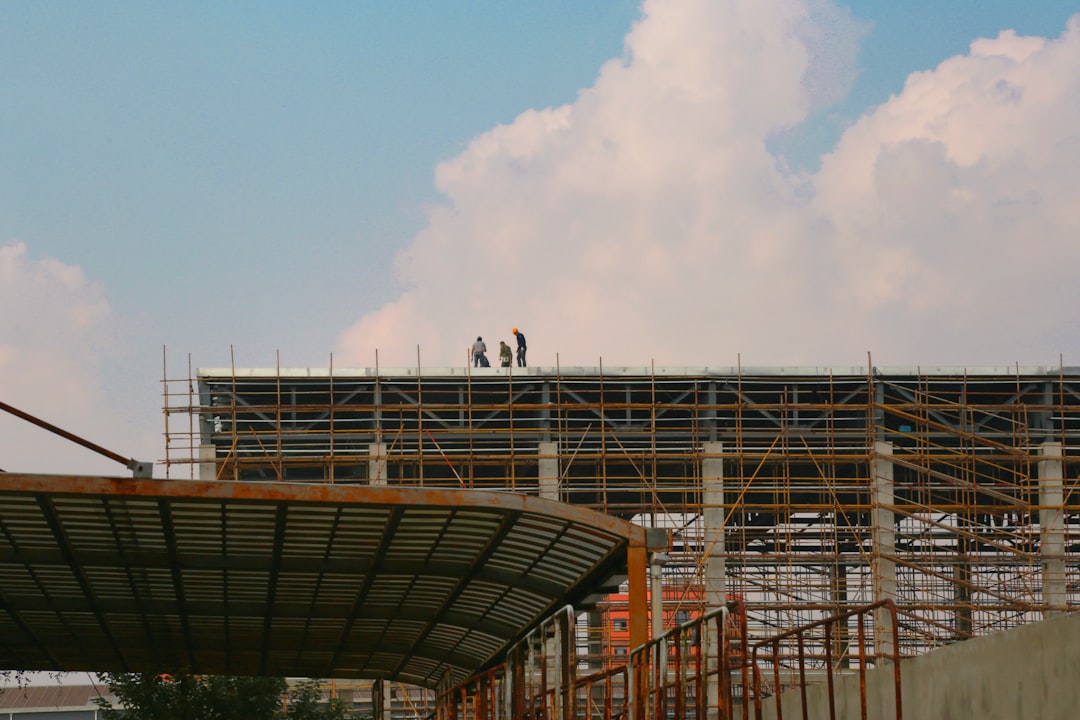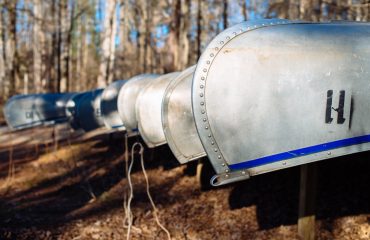Scaffolding is an indispensable part of modern construction, providing temporary support for workers and materials at heights. At the heart of most scaffolding systems lies the humble scaffolding pipe – a seemingly simple component with a crucial role in ensuring worker safety and project efficiency. This comprehensive guide delves into the multifaceted world of scaffolding pipes, exploring their types, applications, safety considerations, erection procedures, and dismantling techniques.
Types of Scaffolding Pipes Used in Construction
Scaffolding pipes are typically made from high-strength steel, carefully engineered to withstand significant loads and environmental conditions. Several types are commonly used, each with its own advantages and disadvantages:
- Standard Scaffolding Pipes: These are the most common type, usually made from galvanized steel to provide corrosion resistance. They come in various diameters and lengths, allowing for flexibility in scaffold design. The standard diameter is often 1.65 inches (42mm), but other sizes exist.
- Black Scaffolding Pipes: These are similar to galvanized pipes but lack the protective zinc coating. They are generally cheaper but require more frequent maintenance and are more susceptible to rust and corrosion. They are often used in short-term projects or indoor settings where corrosion is less of a concern.
- Aluminum Scaffolding Pipes: Lighter than steel, aluminum scaffolding pipes are easier to handle and transport, making them suitable for certain applications. However, they are generally more expensive and may not be as strong as steel pipes, limiting their use in heavy-duty projects.
- Couplers and Fittings: In addition to the pipes themselves, a range of couplers and fittings are essential for creating a stable and secure scaffold structure. These include swivel couplers, right-angle couplers, base plates, and other specialized components.
Safe Erection and Dismantling of Scaffolding Pipes
The erection and dismantling of scaffolding is a potentially hazardous process that requires meticulous planning and adherence to strict safety protocols. Improperly erected scaffolding can lead to serious injuries or fatalities. Key safety considerations include:
- Proper Training: Only trained and competent personnel should erect or dismantle scaffolding. Workers should be familiar with all safety regulations and procedures.
- Ground Conditions: The ground must be level and firm to provide a stable base for the scaffold. Any unevenness or soft ground should be addressed before erection begins.
- Tie-in Points: Scaffolding should be securely tied to the building structure at regular intervals to prevent it from collapsing. The tie-in points should be adequately strong and properly positioned.
- Inspection: Regular inspections are crucial throughout the construction process to identify and address any potential hazards. Damaged or weakened components should be immediately replaced.
- Safe Access: Proper access and egress points should be provided to allow workers to safely move around the scaffold. Ladders or stairways should be used, and guardrails should be installed.
Common Applications of Scaffolding Pipes in Construction
Scaffolding pipes are used in a wide range of construction applications, enabling workers to safely access various heights and perform tasks efficiently. Some of the most common applications include:
- Exterior Wall Construction: Scaffolding provides a platform for bricklayers, painters, and other tradespeople working on exterior walls.
- Interior Work: Scaffolding can be used for interior applications such as plastering, painting, and installing ceilings.
- Bridge Construction: Large-scale scaffolding systems are used in bridge construction to support workers and materials during the building process.
- Industrial Maintenance: Scaffolding provides access for maintenance work on industrial structures, such as tanks, pipelines, and power plants.
- Roofing and Facade Work: Scaffolding is essential for safe and efficient roofing work and facade maintenance or repair.
Maintaining and Inspecting Scaffolding Pipes
Regular maintenance and inspection are crucial for ensuring the longevity and safety of scaffolding systems. Neglecting maintenance can lead to structural failure and potentially catastrophic consequences. Key aspects of maintenance include:
- Visual Inspection: Regular visual inspections should be carried out to identify any signs of damage, such as rust, dents, or cracks. Damaged components should be promptly replaced.
- Corrosion Protection: Galvanized pipes should be inspected for any signs of zinc degradation. Black pipes should be regularly painted to prevent rust.
- Tightness of Couplers: All couplers and fittings should be checked to ensure they are securely fastened and properly aligned.
- Load Capacity: The scaffold should be designed and loaded to ensure it does not exceed its rated load capacity.
- Documentation: Detailed records should be kept of all inspections, maintenance activities, and repairs.
Choosing the Right Scaffolding Pipes for Your Project
Selecting the appropriate scaffolding pipes for a construction project requires careful consideration of several factors, including the project’s size, complexity, and duration. Key factors to consider include:
- Project Height: The height of the project will determine the required length and number of scaffolding pipes.
- Load Capacity: The anticipated load on the scaffold will influence the choice of pipe diameter and material.
- Environmental Conditions: The environmental conditions, such as exposure to moisture or extreme temperatures, will affect the choice of galvanized versus black pipes.
- Budget: The budget for the project will play a significant role in the selection of materials and components.
- Accessibility: The accessibility of the construction site will affect the choice of pipe material (e.g., lighter aluminum pipes for difficult-to-access areas).
By understanding the different types of scaffolding pipes, their safe erection and dismantling procedures, common applications, and maintenance requirements, construction professionals can ensure the safety and efficiency of their projects. Proper planning, training, and adherence to safety regulations are paramount in minimizing risks and maximizing the effectiveness of scaffolding systems.
Tags: Scaffolding Pipes, Construction Safety, Scaffolding Erection, Scaffolding Dismantling, Scaffolding Maintenance




